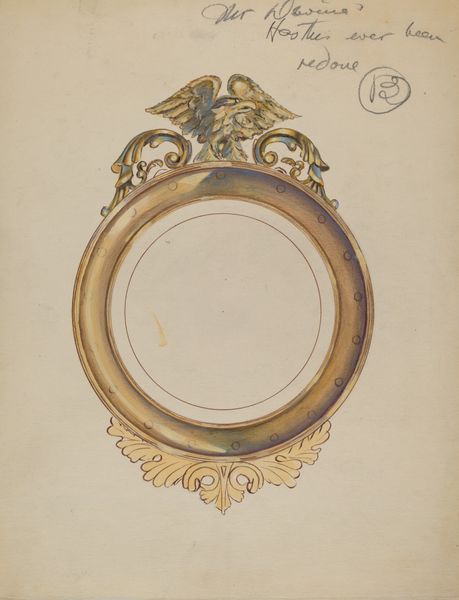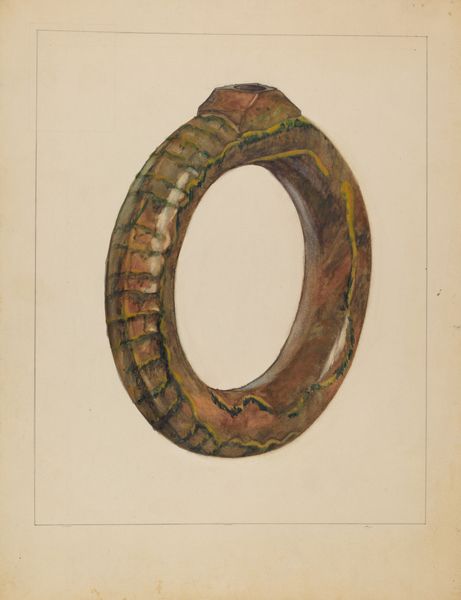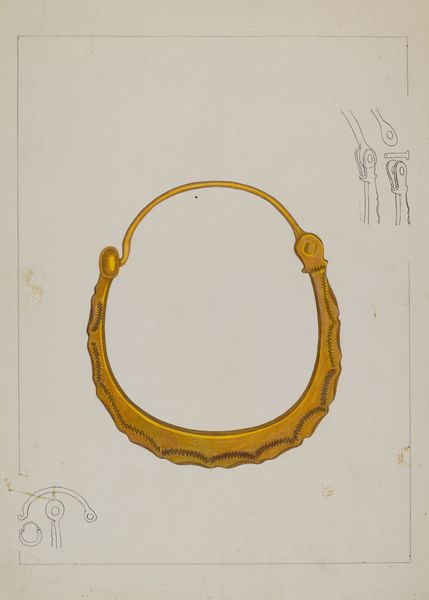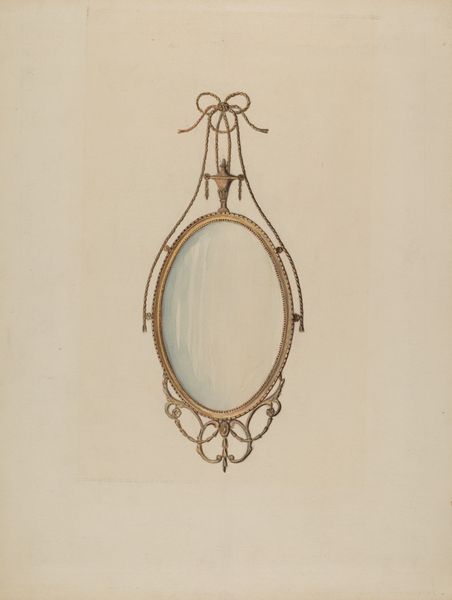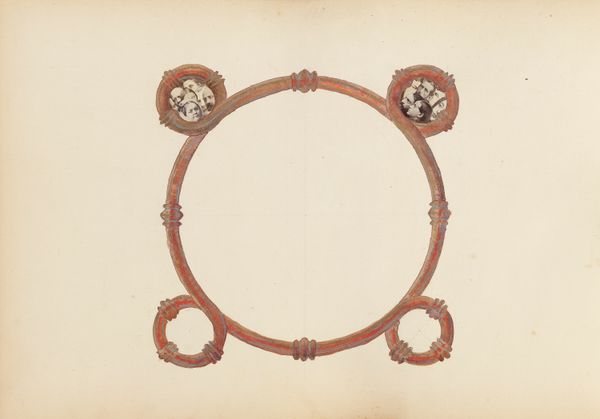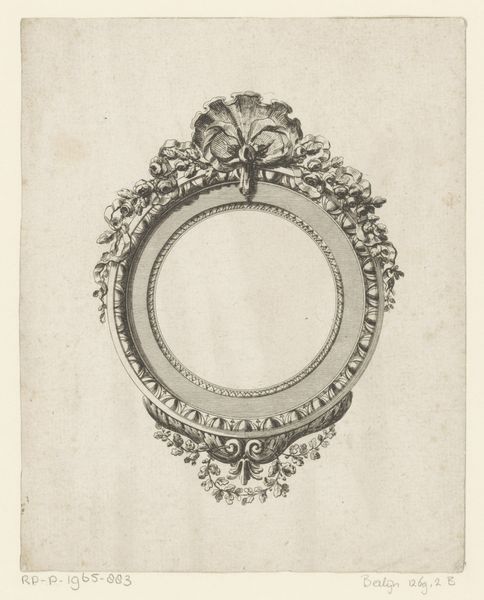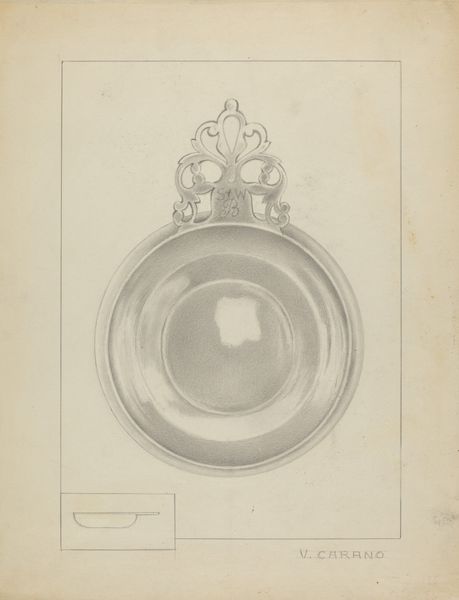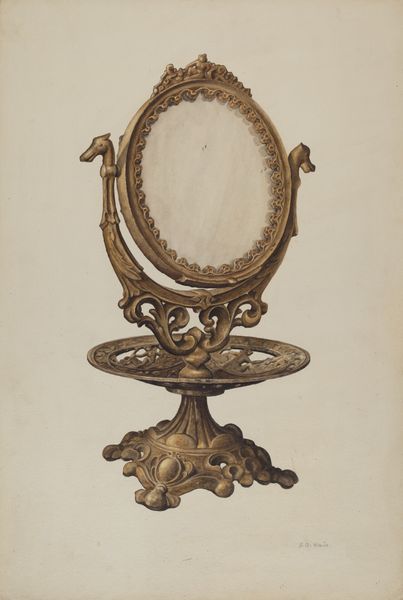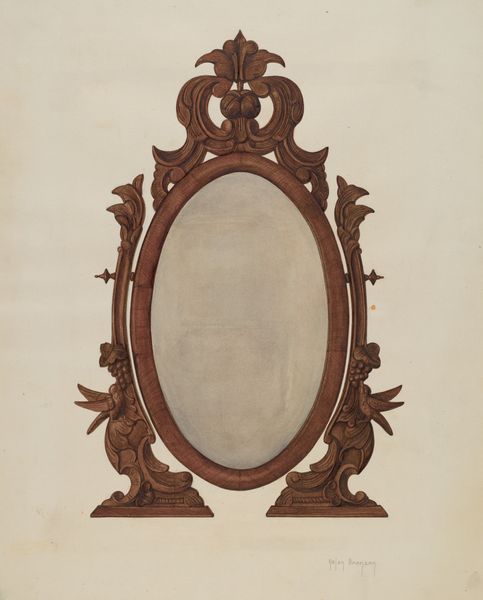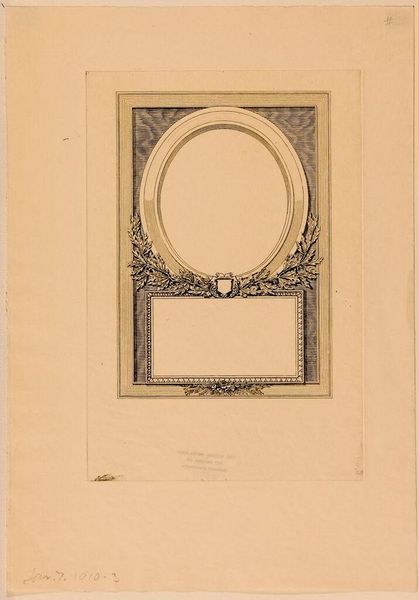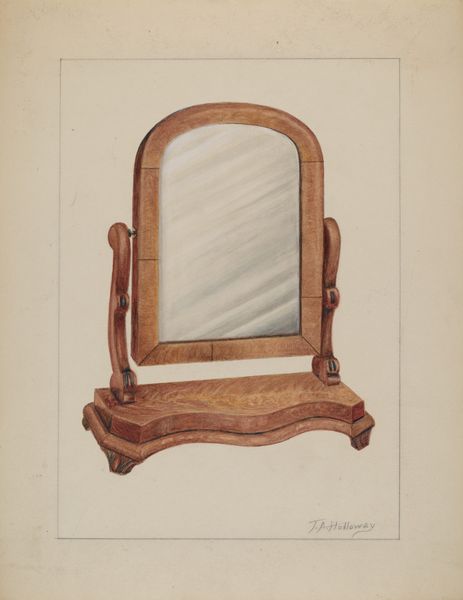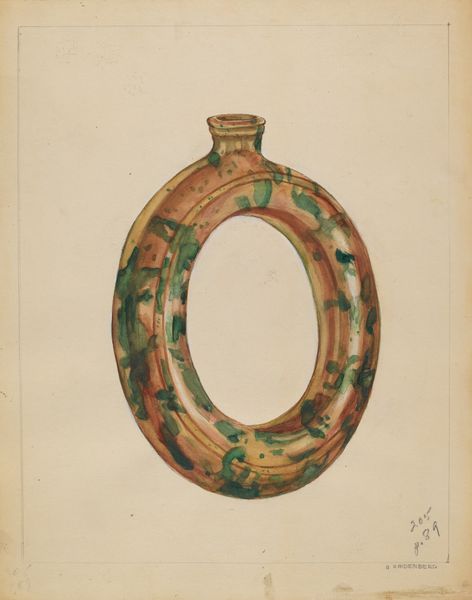
drawing, coloured-pencil
#
drawing
#
coloured-pencil
#
charcoal drawing
#
coloured pencil
#
watercolour illustration
#
academic-art
Dimensions: overall: 27.8 x 22.8 cm (10 15/16 x 9 in.) Original IAD Object: 12 1/2x14 1/2"outside; 7 1/2x9 1/2"inner meas.
Copyright: National Gallery of Art: CC0 1.0
Curator: Here we have Manuel G. Runyan’s “Picture Frame,” likely dating to around 1936, created with colored pencil. I’m immediately struck by how detailed the rendering is; it feels almost like a trompe l'oeil, though clearly it’s a drawing. Editor: There's a curious melancholy in it, isn’t there? The ornate fruit designs around the oval... they hint at abundance, perhaps even a golden age, but the emptiness at its center begs to be filled, longing for content. I’m fascinated by the way he uses such painstaking technique for, well, just a frame. Curator: True. Fruit has always been a signifier of life’s bounty and the passage of time, of course. What’s really intriguing is how Runyan strips away any narrative or subject matter—only the container remains. Is he suggesting that the frame is as significant, or perhaps even more so, than the image it contains? Editor: Possibly. The very precise craftsmanship is worth noting. Look at the pencil work—the subtle gradations in color giving the frame its dimension. He’s clearly thinking about how these materials transform humble wood, and gilding, into something aspirational, into high commodity culture. A way to signal and contain prestige, wealth, memory… Curator: Yes! And think about the historical context. In the midst of the Depression, the frame—symbolically holding the precious, ideal image—becomes an almost defiant statement. An assertion of beauty and tradition in a time of hardship. It speaks of resilience, of preserving something valuable even when times are hard. Editor: Interesting point. What kind of labor went into constructing physical, gilded, and decorative frames like this in the 1930s? Who made them, and were they also weathering difficult economic circumstances? In reality, not just symbolically, the creation of these decorative pieces were affirmations. Curator: Looking at it this way certainly changes how I perceive the picture frame! Editor: Exactly. To consider material production is to invite many histories to bear on what we see now. It fills the "void," if you like, left by the work’s initial mood of "melancholy" into an "affirmative" statement about cultural resilience.
Comments
No comments
Be the first to comment and join the conversation on the ultimate creative platform.
